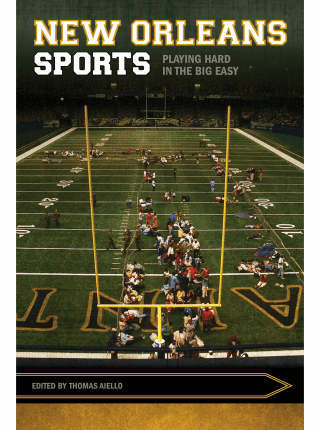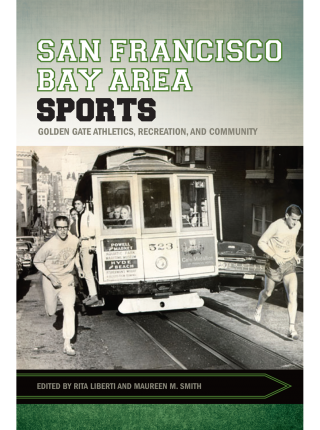The histories in Twin Cities Sports are rooted in the class, ethnic, and regional identity of this unique upper midwestern metropolitan area. The compilation includes a wide range of important studies on the hub of interwar speedskating, the success of Gopher football in the Jim Crow era, the integration of municipal golf courses, the building of a world-renowned park system, the Minneapolis Lakers’ basketball dynasty, the Minnesota Twins’ connections to Cuba, and more.
Twin Cities Sports
$32.95
Games for All Seasons
Edited by Sheldon Anderson
296 pages, 6 × 9, 15 images, index
978-1-68226-109-5 (paper)
February 2020
Sheldon Anderson is professor of history at Miami University in Oxford, Ohio, where he teaches modern European and sports history. He is the author of The Politics and Culture of Modern Sports.
“In Twin Cities Sports, editor Sheldon Anderson has collected a unique and thorough set of articles that provide a strong sense of how residents of the Twin Cities of Minneapolis and St. Paul have used and continue to use sports at all levels to shape their community identities across cultural, ethnic, political, or class-based associations. … Twin Cities Sports serves as a thoughtful, readable compendium of historical sporting information in the Minneapolis/St. Paul area. Moreover, the unifying thread between all thirteen articles is the way sports and community identity have engaged in a constant process of influence over each other, shaping not only the built environment but community, class, and racial identities.”
—Peter Lund, Journal of Sport History, Spring 2021
“Twin Cities Sports constitutes something like a civic biography of athletics for a metropolis that is often described as the ‘most underrated city in America.’ Eschewing hype and boosterism, Sheldon Anderson has produced an admirable, entertaining anthology consistent with the unassuming, candid ethos of the ‘Land of 10,000 Lakes.’”
—Daniel A. Nathan, former president of the North American Society for Sport History
“Well documented and smartly argued, these essays demonstrate the Twin Cities’ compelling history with sports. Sheldon Anderson has succeeded in bringing together essays that express a unique Minnesota connection. A fine resource for history buffs as well as sports fans.”
—Chris Elzey, coeditor of DC Sports: the Nation’s Capital at Play
Introduction
Map of Minnesota
Map of the Twin Cities
1. From Parks to Recreation: The Minneapolis Parks System, 1880s–1920s by Shannon Murray
2. Fairways Open to All: A History of Golf in the Twin Cities by Thomas B. Jones
3. Aces on Ice: The Glory Days of Speed Skating in the Twin Cities by David C. Smith
4. The End of Jim Crow and the Decline of Minnesota Gopher Football by Sheldon Anderson
5. From the Cedar-Riverside Marines to the Purple People Eaters: Professional Football in the Twin Cities by Dick Dahl
6. Just for Kicks: The World’s Game Comes to the Twin Cities by Tom Taylor
7. The State of Basketball: Minnesota’s Storied Hardcourt History by Sheldon Anderson and David C. Smith
8. The Minneapolis Lakers: The First NBA Dynasty by Stew Thornley
9. Minnesota Ice: The Eleventh Hockey Province by David C. Smith and Sheldon Anderson
10. From DC Follies to Frostbite Falls: Calvin Griffith and the Senators’ Move to Minnesota by Jon Kerr
11. The Minnesota Twins, Tony Oliva, and the Cuban Baseball Players by Blair Williams
12. Of King Tuts and Kewpies: Professional Boxing in the Twin Cities by Scott Wright
13. “How ‘bout Dat, You Turkey Necks!”: The Heyday of Twin Cities Pro Wrestling by Sheldon Anderson and Brad Lundell

Sport, Culture, and Society seeks to promote a greater understanding of the aforementioned issues and many others. Recognizing sport’s powerful influence and ability to change people’s lives in significant and important ways, the series focuses on topics ranging from urbanization and community development to biography and intercollegiate athletics. It includes both monographs and anthologies that are characterized by excellent scholarship, accessible to a wide audience, and interesting and thoughtful in design and interpretations. Singular features of the series are authors and editors representing a variety of disciplinary areas and who adopt different methodological approaches. The series also includes works by individuals at various stages of their careers, both sport studies scholars of outstanding talent just beginning to make their mark on the field and more experienced scholars of sport with established reputations.




